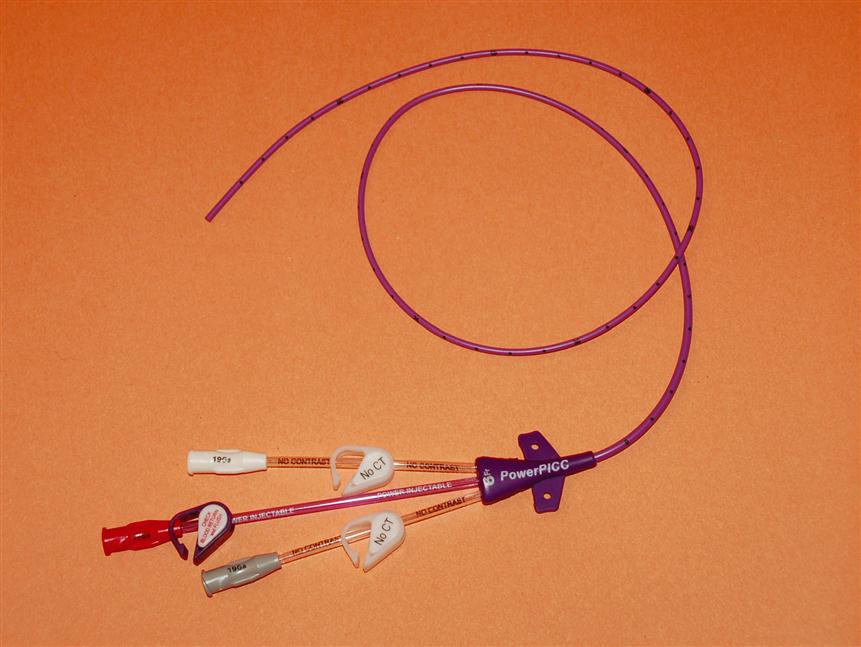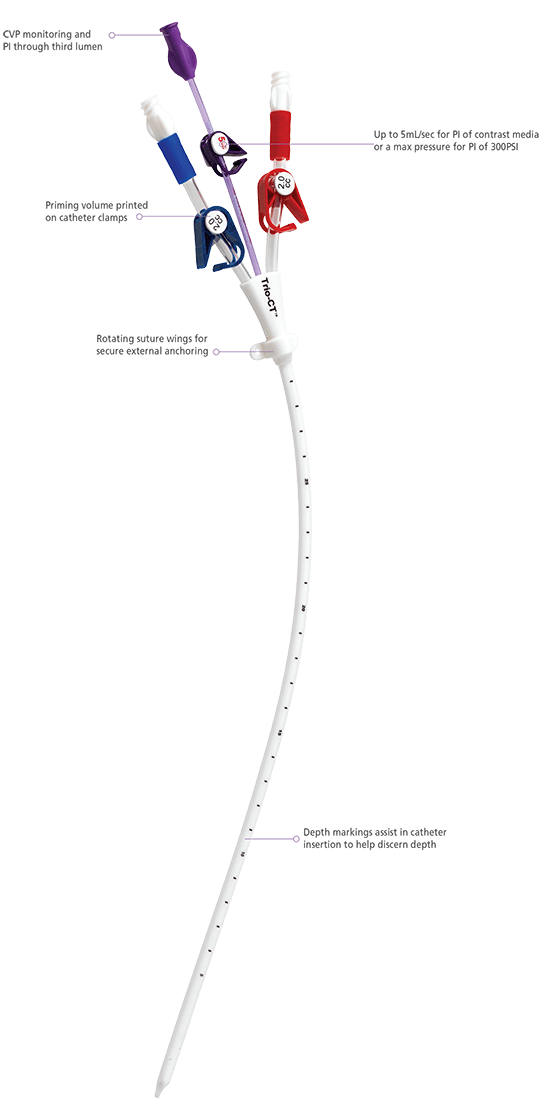
- IJ TRIPLE LUMEN CENTRAL LINE HOW TO
- IJ TRIPLE LUMEN CENTRAL LINE SKIN
Evaluate the patient’s medication profile for drug incompatibilities. Determine if blood return is hampered by the position of the patient’s arm or other body part (when either lying or standing). If you suspect your patient’s catheter is occluded, assess the entire infusion-delivery system for obstructions and kinks. About 40% to 50% of occlusions are nonthrombotic and result from mechanical or postural factors, medication precipitate, catheter malpositioning, or undesirable catheter-tip location. An occlusion can be thrombotic or nonthrombotic (not caused by a thrombus). Catheter occlusionsĪ catheter occlusion occurs when a blockage prevents caregivers from flushing the central line or aspirating blood. It also provides assessment, prevention, and troubleshooting tips for central lines. This article discusses potential complications-catheter occlusion, bleeding and hematoma, catheter-tip migration, catheter rupture, phlebitis and associated pain, swelling and deep vein thrombosis (DVT), infection, and embolism. To promote positive outcomes, clinicians caring for patients with central lines must monitor carefully for signs and symptoms of complications.

Author Guidelines and Manuscript Submission.Ensure your sterile trolley is well set up with the kit lined up in the order you will use things and a clear area for sharps.Always ensure you are happy with your anatomy before commencing the procedure.Confirm what the line will be used for and how many infusions a patient has to aid your selection of the line with the correct amount of lumens Most commonly 3,4 and 5 lumen lines are inserted. Central lines can have multiple lumens.Top Tips for central line (central venous catheter) insertion

Clear documentation of date of insertion and monitor for infection.Chest x-ray to confirm placement and to check for pneumothorax.Run a blood gas to ensure a venous sample.
IJ TRIPLE LUMEN CENTRAL LINE HOW TO
Nursing staff can show you how to do this or will do it for you. Attach central line to pressure bag to allow CVP monitoring. Dress with a clear dressing so the insertion point can be clearly seen. Suture the line to allow 4 points of fixation. Aspirate and flush all lumens and re clamp and apply lumen caps. Once the central line is in place, remove the wire. Do not advance the line until you have hold of the end of the wire Remove the dilator and pass the central line over the Seldinger wire. At this stage there may be some bleeding so ensure to have some swabs ready. Pass the dilator over the wire and gently but firmly dilate a tract through to the internal jugular. This should be done cutting away from the wire so as not to damage it IJ TRIPLE LUMEN CENTRAL LINE SKIN
Use scalpel to make an small incision in the skin (approx 3mm). Ensure the wire stays in the vein as you do this Keeping hold of the inserted wire, remove the needle. When blood is freely aspirated remove syringe and immediately inset Seldinger wire. Under ultrasound guidance take Seldinger needle attached to syringe and insert into the internal jugular vein. Ensure caps are available for the lumens. Whilst lignocaine has time to work flush all lumens of the line and then clamp all lumens except the Seldinger port. Under ultrasound guidance insert lignocaine cutaneously, subcutaneously and around internal jugular. Apply sterile sheath to the ultrasound probe. Make sure to have some spare gauze swabs ready. Clean the area and apply sterile field. Wash hands and don sterile gown and gloves. Procedure for central line (central venous catheter) insertion Position patient with head down if they can tolerate it, with head facing away from side of insertion. Infection, bleeding (arterial puncture, haematoma, haemothorax), pain, failure, damage to surrounding structres (including pneumothorax), thrombosis. Consent patient if conscious otherwise document why the procedure is in the patients best interests. Avoid in raised intracranial pressure- aim for a femoral approach if required. Lignocaine (4ml (2 vials) of 2% is reasonable)Ĭontraindications to central line (central venous catheter) insertion. Ultrasound and sterile ultrasound sheath. Intravenous access (long term or difficult peripherally)Ĭomplications of central line (central venous catheter) insertionĮquipment required for central line (central venous catheter) insertion. amiodarone, inotropes, high concentration electrolytes Administration of medications that require central access e.g. The internal jugular is usually preferred to subclavian approach where possible as it is less likely to lead to pneumothorax Indications for central line (central venous catheter) insertion 
Central line (central venous catheter) insertion Central line insertion should be real-time ultrasound guided.







 0 kommentar(er)
0 kommentar(er)
